Building a home studio can be a very expensive undertaking, especially if you intend on purchasing the best studio monitors, microphones, plug-ins, and instruments that money can buy. However, without careful forethought, if you don't soundproof your studio even the best-quality audio equipment will sound inferior.
Even in the quietest of rooms, the best condenser microphones will pick up background noise that you hadn't noticed before. A noise that will have an adverse effect upon any future recordings.
There are two types of sound, understanding what they are and how they transmit provides greater insight on how to control noise with soundproofing.
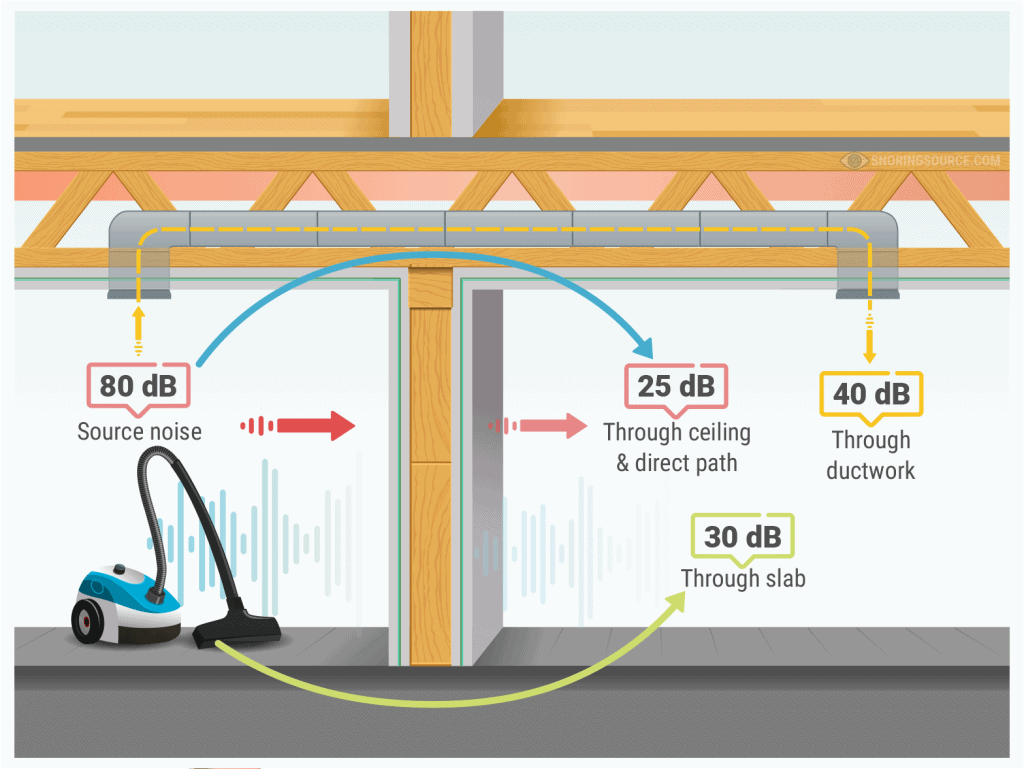
Most sounds that you hear are airborne. Conversation, music, traffic, and dogs barking are prime examples.
Sound is an energy that travels in waves. It will continue through the air until it hits a solid medium, such as a wall. The impact causes vibration as the waves transmit through it and into the space beyond.
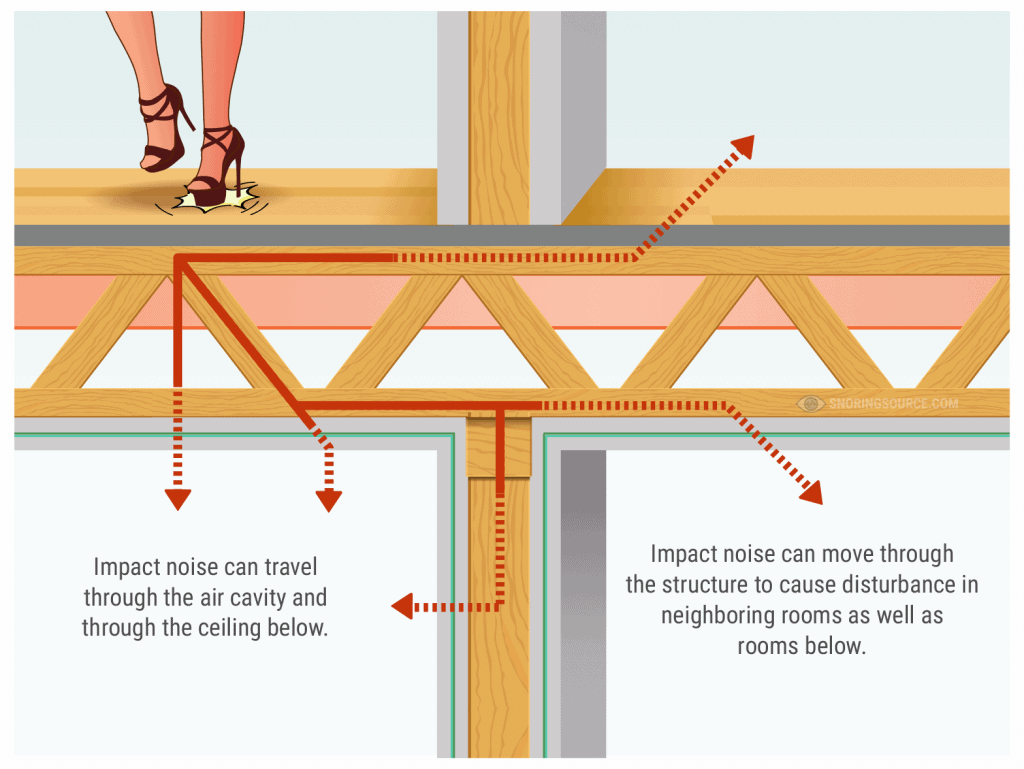
Structure-borne noise is also referred to as impact noise. It is the noise transmitted as a result of two objects colliding or impacting each other. Footsteps on shared floors/ceilings and home improvement noises are common examples.
Due to its nature, impact noise is often more difficult to isolate and therefore harder to soundproof.
In order to improve sound in a studio, you will need to apply both acoustic treatments and soundproofing. Each has different properties that, when combined, complement each other to provide improved sound quality.
Soundproofing does not affect the quality of sound, just the volume. It is used to block out external noise so as not to disrupt recordings. Soundproofing also prevents sound from inside the room from escaping and causing noise nuisance elsewhere in the house, or to neighbors.
Acoustic treatments are used to improve the sound quality inside a room by absorbing excessive ambient noise.
Acoustics refers to how sound works in a room, how it moves, and how it's perceived.
Noise absorbing bass traps (bass absorber), acoustic panels, and diffusers are the main methods employed in home studios. Bass traps are the most effective form of acoustic treatment. Their name is also misleading, as they are very effective at absorbing sound from a wide spectrum of frequencies.
Acoustic panels work well when combined with bass traps. Although they don't trap much bass noise they absorb medium and high frequencies. They are inexpensive, cover a large surface area, and catch the waves that the corner-positioned bass traps miss.
Acoustic diffusers work by jumbling preventing reflected sound waves from returning into the room. They work better in smaller rooms but are often redundant if you have installed bass traps and acoustic panels.
Using a combination of all three treatments results in improved acoustics.
Bass traps deal with low frequencies, panels with medium to high frequencies, and diffusers scatter any remaining frequencies from causing a nuisance.
To achieve perfect audio and quiet recording conditions, one should initially ensure the room is soundproofed to block unwanted noise from entering or escaping the room.
Only when this has been achieved should you begin to consider your acoustic options. The combination of both methods will result in perfect studio conditions.
Adding mass to a surface makes it thicker; thicker mediums are harder for sound waves to penetrate and vibrate.
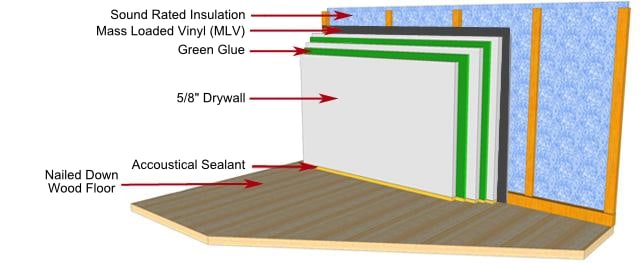
For example:
For an In-home studio a Sound Transmission Class (STC) rating of 55+ is advisable.
A wall of normal construction with ½“ drywall, would have an STC rating of 34.
To achieve this rating the following is doable:
Adding a second layer of drywall would increase the STC to 40-44.
Replace that second layer with a 5/8 " drywall to achieve an STC rating of 50-52.
Using Green Glue to attach the drywall can further increase the STC to 60.
Fitting a layer of MLV between the 2-sheets of drywall makes an STC rating in the mid-60s possible
Learn More: Sound Transmission Class Explained
The sound transmission will be greatly reduced, particularly from medium to higher range frequencies.
This technique involves the reduction of the vibrational energy produced by sound waves. It is most effective when dealing with low frequencies and is, therefore, an ideal method to use in conjunction with adding mass.
For example:
Creating an effective damping system is inexpensive and simple to do. When employing the added mass method, attach the 2-sheets of drywall using Green Glue Noise-proofing Compound.
It is capable of absorbing high amounts of sound energy and transforming it into safe amounts of heat energy.
In a solid structure such as a wall, the sound will travel the path of least resistance. By isolating struts and panels, i.e. creating a gap, the waves are obstructed and lose intensity.
To illustrate:
The common example of this is the 'room within a room' technique, whereby 100x50mm timber is used to create a stud wall or partition system. Metal sheets are sometimes used as an alternative.
While it is very effective it also reduces available floor space.
In a home studio setting, this is a relatively simple, yet cost-effective method that most competent diy enthusiasts could undertake.
This is the process by which a material dissipates sound energy, rather than reflect it.
Although sound won't be eradicated, it will be absorbed and help to improve the overall sound quality of a room.
For example:
Soft porous materials such as insulation and soundproofing foam will absorb unwanted sound that would normally resonate in air cavities.
Insulating between layers of drywall is effective and less expensive than MLV.
Good acoustic insulators such as acoustic panels and filters are also excellent at absorbing nuisance noise.
They are simple to install and should be placed on walls behind the performer where the mic is most sensitive.
Ideally, your home recording studio shouldn't have any windows. If you're unable to remove them, you should install triple-paned windows and install a window plug.
Doors should be solid-core with sweeps fitted at the base. Absorbent weatherstripping should also be used to dampen sound.
Ensure every gap is well sealed. Remember, if light can get through, then so can sound waves.
Even in a quiet room, there will be background noise that might adversely affect the sound quality of any recordings. This is mostly computer noise, created by the intermittent sounds of the fan kicking in, but can be created by A/C units, and people.
Some of the most successful techniques of eliminating the issue include:
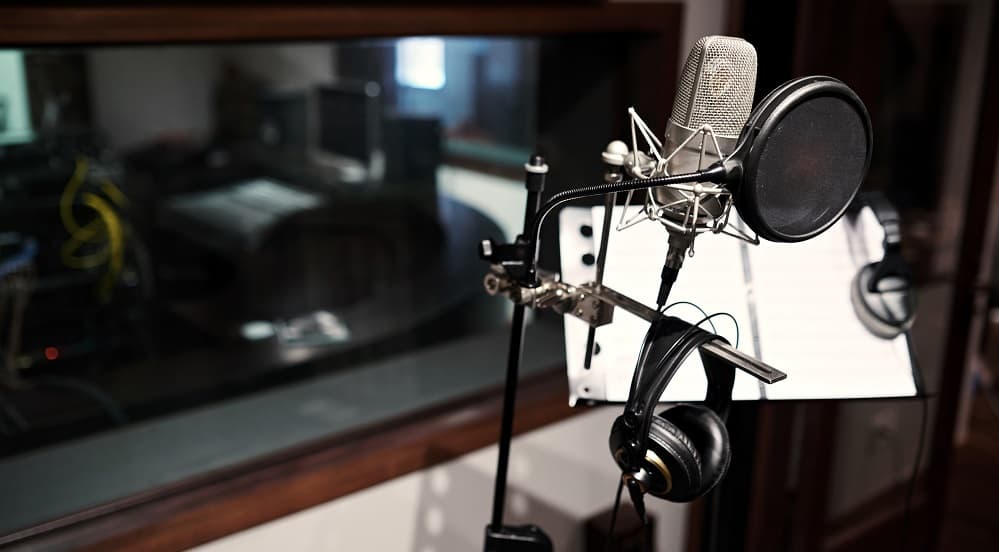
The most effective way to eradicate unnecessary noise is to create a twin-roomed studio, usually partitioned by glass.
The source of the music would be in the room with the mics, for example, a vocalist or a musician with his instrument and amp.
In the other section would be anything that creates unwanted noise; recording gear, computers, tape machines, and people.
Failing that there are other options:
Maintain a maximum distance between mics and recording gear, opposite ends of the room is best.
Use dynamic mics that are less sensitive to high-frequency noises that computers often generate. Also, keep them pointed away from the computer.
Use acoustic treatments and reflective filters behind your artist. That way, much of the noise nuisance will be absorbed before it causes any interference.
Probably the most interruptive noise inherent in any recording studio is the fan from the computer. A laptop stand is used to elevate the laptop allowing a constant flow of air to circulate and keep the motherboard cool. Although the fan cannot be stopped from initiating completely, it will certainly do so much less often.
Something so inexpensive can make an incredible difference. An ergonomic laptop stand can make working for long periods a more comfortable experience and reduce the risk of repetitive strain injury.
A temperature-controlled racking system that can virtually silence the noise from the computer's fan. They offer protection from over-heating with dual-exhaust systems and have integrated alarms to warn of any possible problem.
An IsoBox can provide 29dB of noise reduction but that comes at a price, a rather large price.
It is possible to construct an IsoBox manually utilizing plywood and acoustic foam.
Whilst it does have a degree of success it is not risk-free. It must have adequate ventilation and be constantly supervised.
Solid State Drives feature no moving parts and therefore create no noise.
They also increase the speed of a computer, which allows the producer to use more plug-ins when compared with a standard drive.
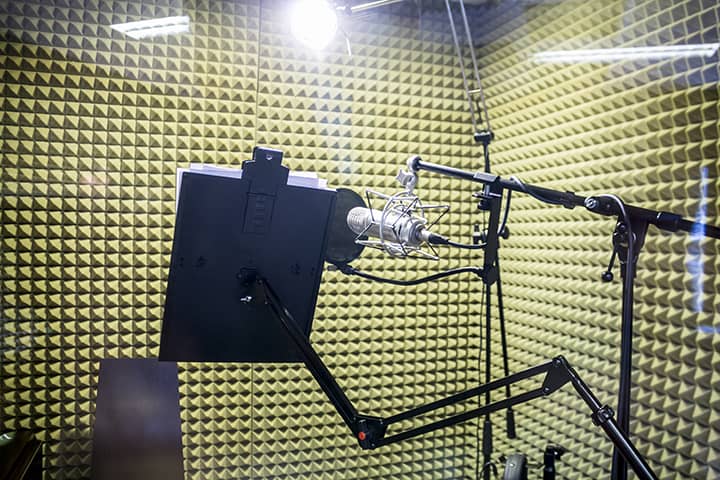
When noise interference cannot be controlled, it is worth considering a multi-room setup.
Set-up the mic in a 'quiet' room, or the room with no A/C units or computer noise. The bathroom has good natural acoustics with tiles and hard surfaces causing much reverberation. If that isn't what you're after, the bedroom, by design has many soft furnishings and will absorb much of the sound.
The computer and all recording gear remain in the studio.
While sealing air leaks can effectively mitigate sound transmission, the adverse affect is that recording studios are prone to being stuffy. Computers, recording equipment, and people all produce heat and an air conditioner is required. However, A/Cs also have the adverse effect of giving off noise.
Depending on the type of air conditioner, you have a few options. For instance for A/C that uses duct-work you can create a sound maze.
A sound maze allows for air to flow through the vent while creating several surfaces for the sound waves to bounce off of which reduces the intensity of sound.
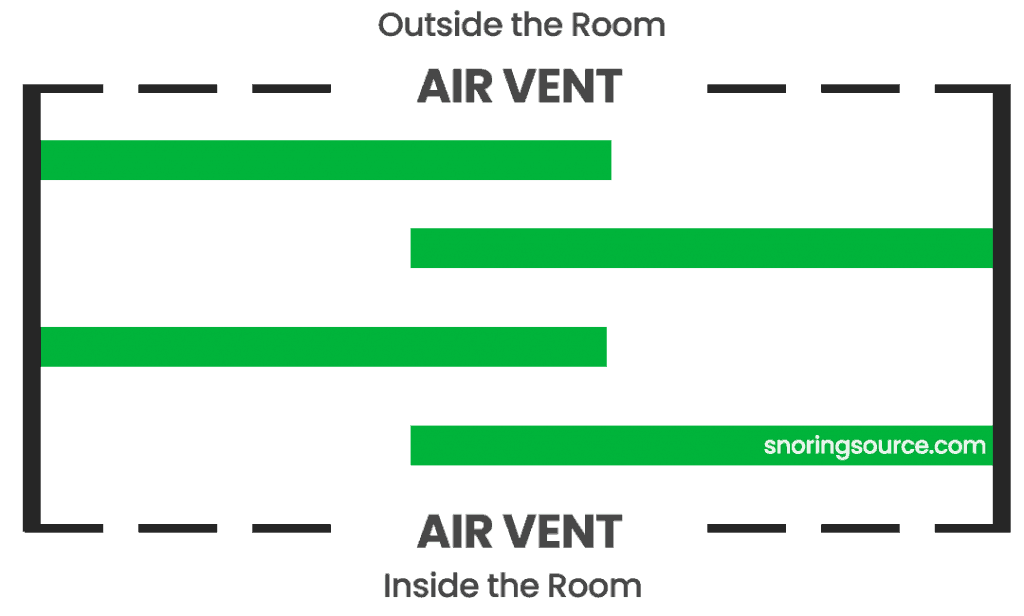
To create a sound maze you need:
Instructions to construct a sound maze:
If you have window air-conditioner the best way to approach it is to seal cracks and gaps around the window.
Studio soundproofing isn't a task to be taken light-heartedly. It's an involved process and large investment.
With the perfect marriage of soundproofing and acoustic treatments, perfect recording conditions are achievable, in the comfort of your own home.

Snoringsource.com is a participant in the Amazon Services LLC Associates Program, an affiliate advertising program designed to provide a means for website owners to earn advertising fees by advertising and linking to amazon(.com, .co.uk, .ca etc) and any other website that may be affiliated with Amazon Service LLC Associates Program.